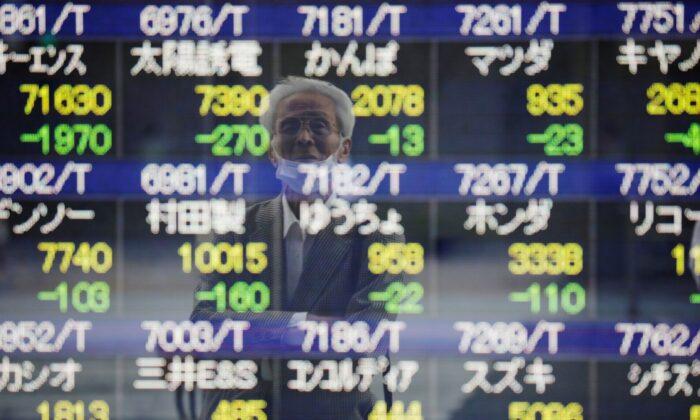LONDON/HONG KONG—European shares slipped on Friday but held their gains for the week as uncertainty around the fate of debt-ridden China Evergrande weighed on investor sentiment.
The regionwide STOXX 600 index slipped 0.78 percent after a three-day run of gains. Britain’s FTSE 100 and Germany’s also weakened.
Still, European shares look set to end the week higher despite Monday’s sharp selloff, as investors turned more positive on the outlook for global growth following the U.S. Federal Reserve policy meeting and on hopes the Evergrande crisis could be contained.
It was a different story in Asia where MSCI’s broadest index of Asia-Pacific shares outside Japan was little changed on the day but has fallen 0.7 percent this week and is poised for its third weekly loss in a row.
Japan’s Nikkei rose 2 percent, catching up with global gains after the market was closed for a public holiday.
Chinese blue chips recovered most of their early losses after a cash injection from the central bank brought its weekly injection to 270 billion yuan ($42 billion)—the largest since January.
U.S. stock futures, the S&P 500 e-minis, were down 0.34 percent.
Evergrande’s debt crisis continues to rattle confidence.

The property developer’s shares fell 11 percent on Friday, extending losses following a Reuters report that some offshore bondholders had not received interest payments by the Thursday deadline. It rallied 17.6 percent the previous day after the company said it had agreed to settle interest payments on a domestic bond.
Global investors have been on tenterhooks as debt payment obligations of Evergrande, labouring under a $305 billion mountain of debt, triggered fears its malaise could pose systemic risks to China’s financial system.
Ray Ferris, chief investment officer for South Asia at Credit Suisse, said that while investors were jittery about China’s prospects due to woes in the property sector and a slew of regulatory changes, there was positive sentiment elsewhere.
“Growth in the large developed economies is above trend, likely to remain above trend and monetary policy remains very supportive of asset prices likely all the way through the middle of next year,” he said.
“Every once in a while shocks to the system give us a correction, but these are more shallow than in the last several decades because of the weight of money out there that needs a home.”
The Fed said on Wednesday it could begin reducing its monthly bond purchases by as soon as November, and that interest rates could rise quicker than expected by next year. The November deadline was largely priced in by markets.
With stocks rallying on Thursday, the dollar index dropped sharply overnight against a basket of its peers, falling from its highest in nearly one month to a one-week low before steadying in European hours.
The yield on benchmark 10-year Treasury notes firmed marginally to 1.44 percent, its highest since July 2, gaining 15 basis points over the last two days.
The bulk of the gains came overnight after a rate increase by the Norwegian central bank and hawkish remarks from the Bank of England reinforced market expectations that the Fed would begin tapering by year end.
“Central bankers have been talking in unison about inflation being transitory but if even the Fed is softening its stance on this, then that could also be the case elsewhere,” said Jan von Gerich, chief analyst, Nordea.
“There is a difference though between the U.S. and euro area, where it’s easier to buy into the story that price pressures are transitory.”

Oil prices rose for a fourth straight day due to global supply concerns following powerful storms in the United States.
Brent crude was up 0.4 percent to $77.56 a barrel and U.S. oil was up 0.2 percent to $73.46 a barrel.
Gold regained some ground on Friday, with the spot price rising 0.7 percent to $1,754 per ounce. It fell over 1 percent the day before as higher yields hurt the non-interest bearing asset.





